Currently Empty: $0.00
Tai Chi Knowledge
Gentle Tai Chi Moves for Senior Wellness
Tai chi is an old Chinese martial art. People all over the world now see how good it is for health, especially for older folks. It mixes slow, careful moves with deep breaths and concentration. This makes it an easy exercise that helps with balance, staying flexible, and feeling good overall.
Table of Content
- Benefits of tai chi for senior balance
- Tai chi routines for arthritis relief
- Simple tai chi exercises for beginners
- Tai chi breathing techniques for seniors
- Chair tai chi for limited mobility
- Tai chi for better sleep in elderly
- Tai chi clothing and footwear choices
- Finding qualified tai chi instructors
- Tai chi for cognitive health in aging
- Tai chi community groups for seniors
- Tai chi and medication management
- Home tai chi practice setup tips
- Tai chi equipment for elderly practitioners
For older people, it’s not only good for the body. Tai chi also clears the mind and keeps emotions steady. Here we’ll look at 12 important things about tai chi for seniors. We’ll share useful tips and real stories to help older adults try this soft but strong practice.
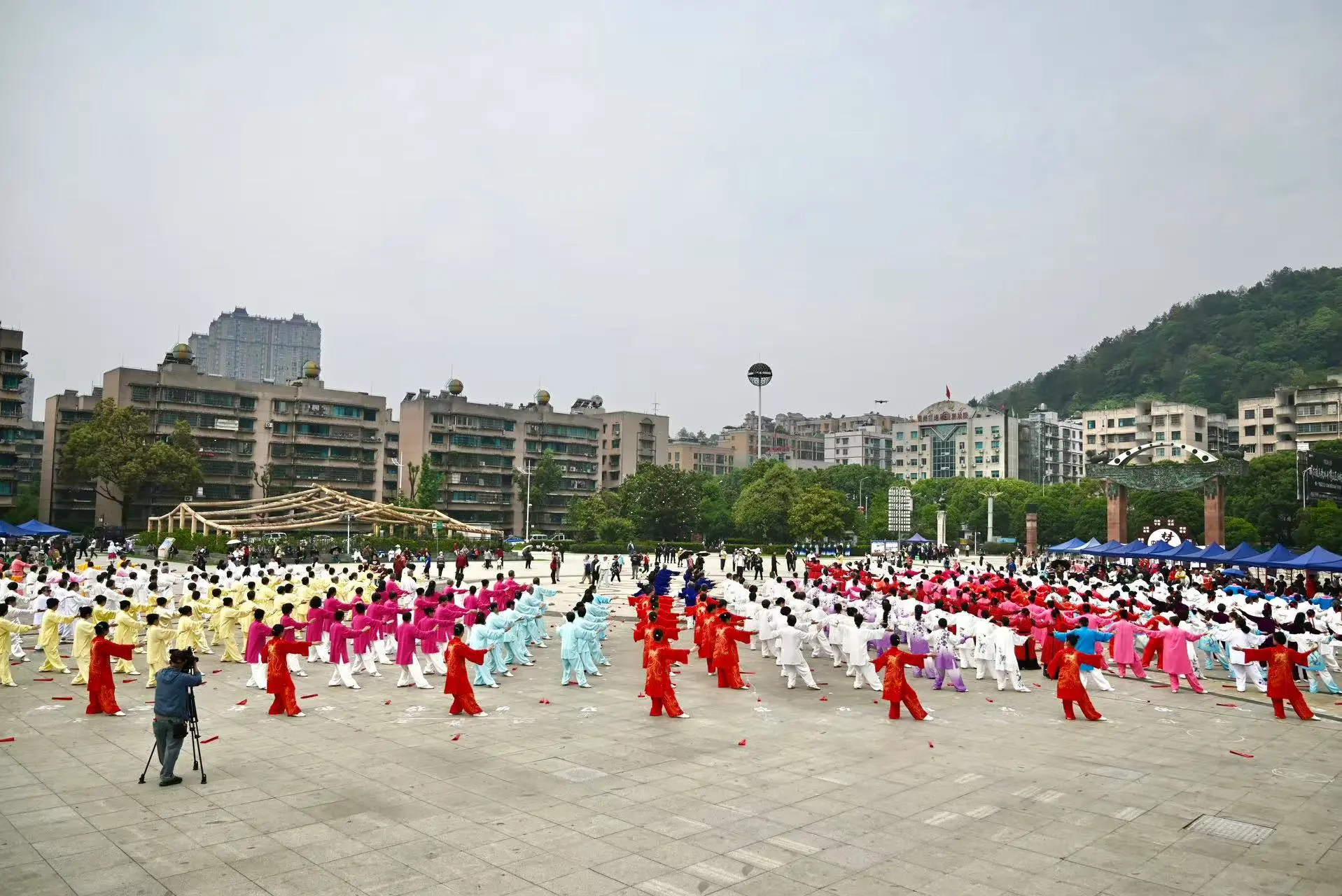
Benefits of tai chi for senior balance
Falling is a big worry for seniors. But tai chi’s gentle, controlled moves really help with staying steady and moving smoothly.
Research proves doing tai chi often can cut the chance of falling by almost half. It makes leg muscles stronger. Plus it helps your body sense where it is – that’s called proprioception.
Lots of senior centers have special tai chi classes just for balance problems now. Take Martha, who’s 78. After two months of tai chi, she felt steadier on her feet. Now she walks her dog without worry. When you shift your weight in tai chi, it’s like real-life movements. So what you learn helps with everyday stuff.
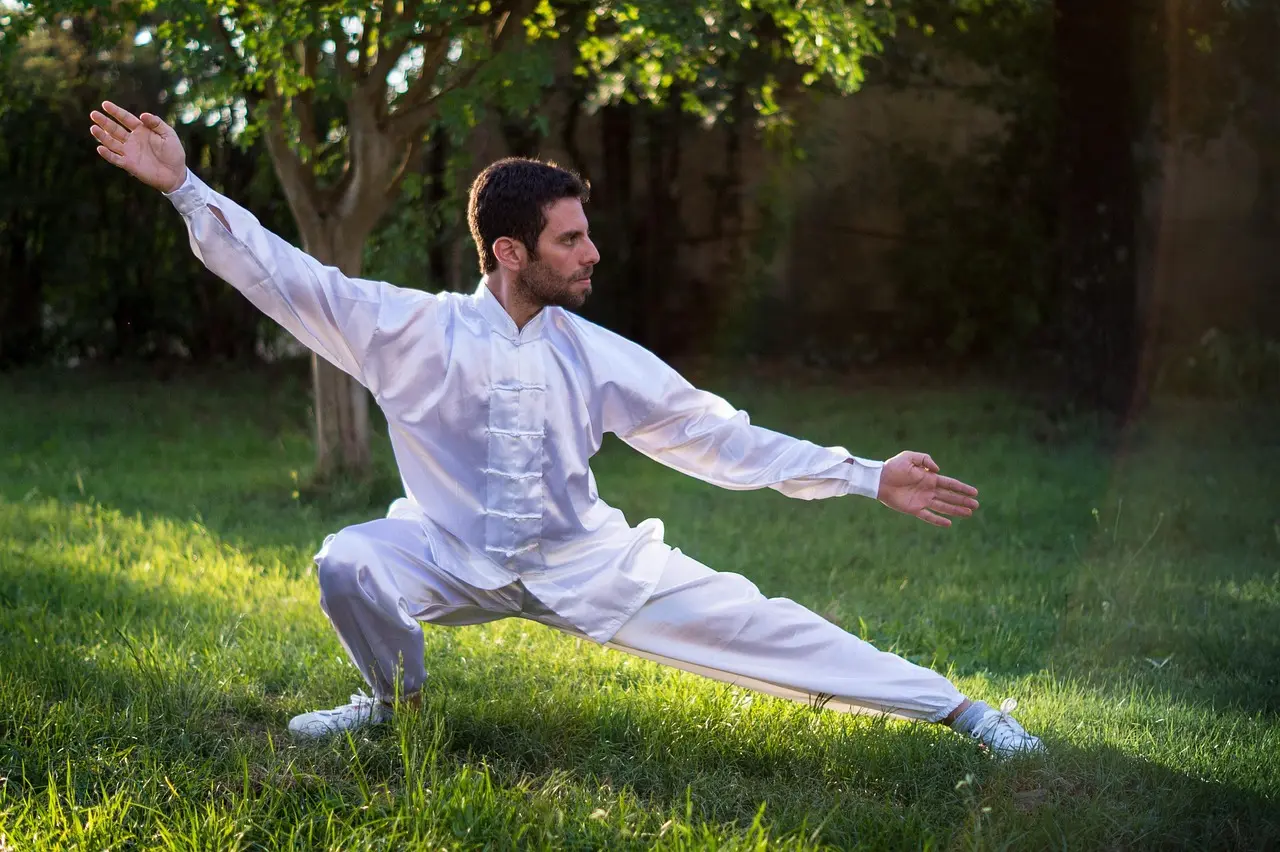
Tai chi routines for arthritis relief
People with arthritis really like tai chi. Its easy moves help joints move smoothly without hurting.
The smooth moves make more joint fluid. This fluid acts like a cushion for your joints. Lots of arthritis groups say tai chi is great to use along with other treatments.
Special tai chi for arthritis uses changed-up moves for people who can’t move as well. Teachers with special training (like from the Tai Chi for Arthritis Institute) show you how to do it safely. Studies show people hurt less and feel less stiff. Some even need less pain medicine. Doing it in a group makes you feel good emotionally too. It’s a nice way to deal with long-term pain.
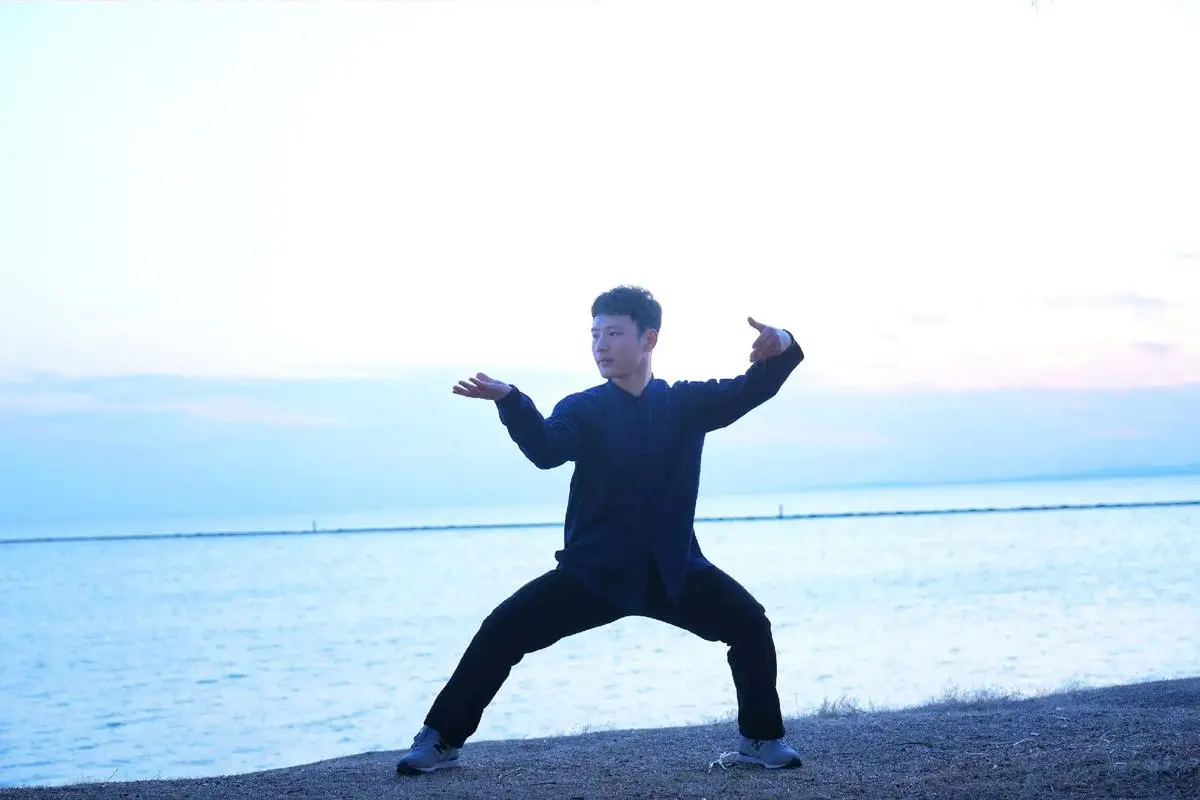
Simple tai chi exercises for beginners
Tai chi might seem hard at first. But starter classes take the tricky parts and make them simple.
Easy moves like Cloud Hands teach the basics without confusing beginners. Lots of community centers have Tai Chi for Golden Agers classes made just for older beginners.
These classes usually stick to 6-8 simple moves they do over and over. Teachers care more about standing right and breathing than doing it perfectly. It’s a no-pressure way to learn. You don’t need much gear – just comfy clothes and flat shoes. Some classes use chairs for help, so even people who don’t move well can join in. You go at your own pace, getting more sure of yourself while seeing real changes like standing taller and feeling calmer.
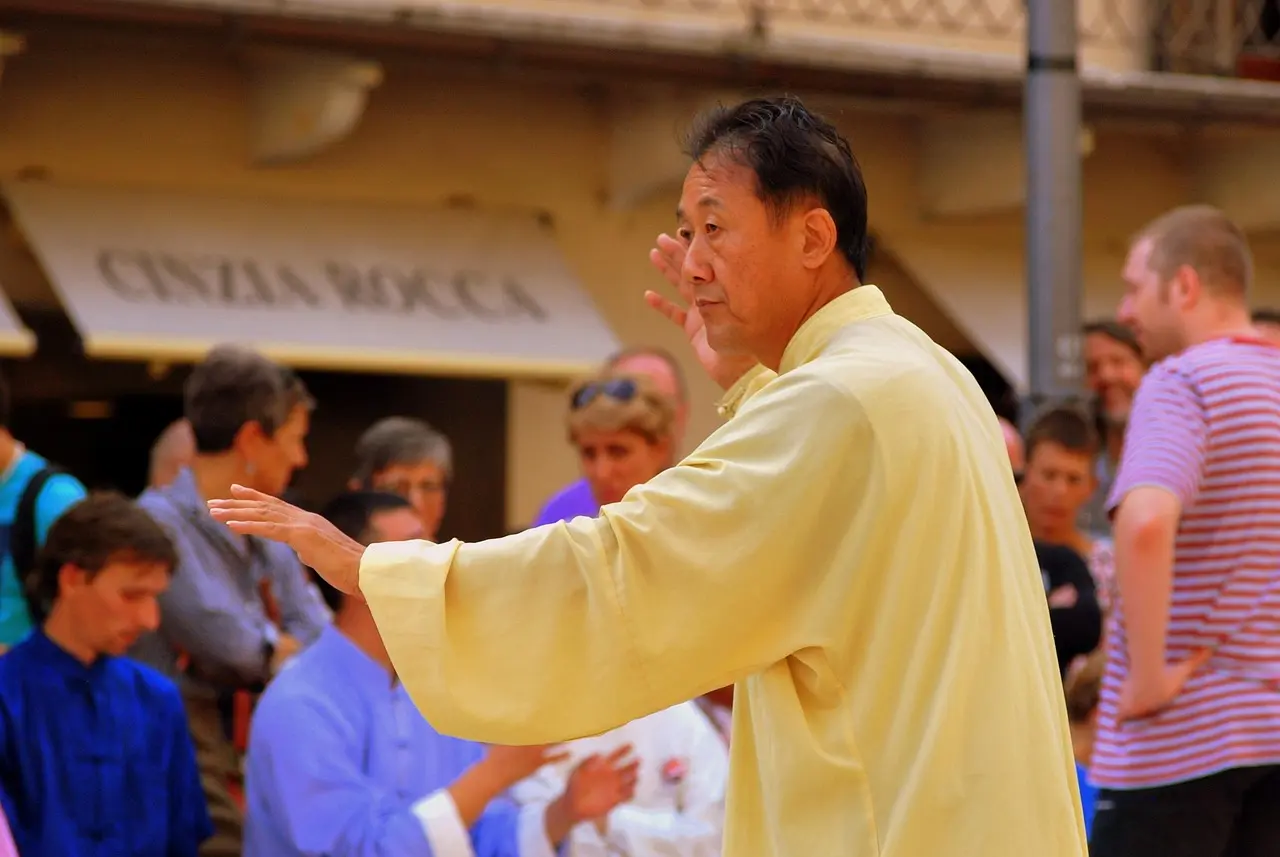
Tai chi breathing techniques for seniors
Breathing right is super important in tai chi, but lots of older folks miss this key part.
In tai chi, you take slow, deep belly breaths that match your moves. Breathing from your belly gets more oxygen in your blood than the shallow chest breaths many seniors take.
It also wakes up your rest and digest system, helping you relax. Now lots of heart rehab programs use tai chi breathing to help control blood pressure. Trained teachers show special tricks like reverse breathing (sucking in your belly when you breathe in) – great for people with breathing problems. Doing it regularly can make your lungs stronger. Some folks with COPD say they breathe easier after sticking with tai chi. Paying attention to your breathing also sharpens your mind, making it like meditation in motion.
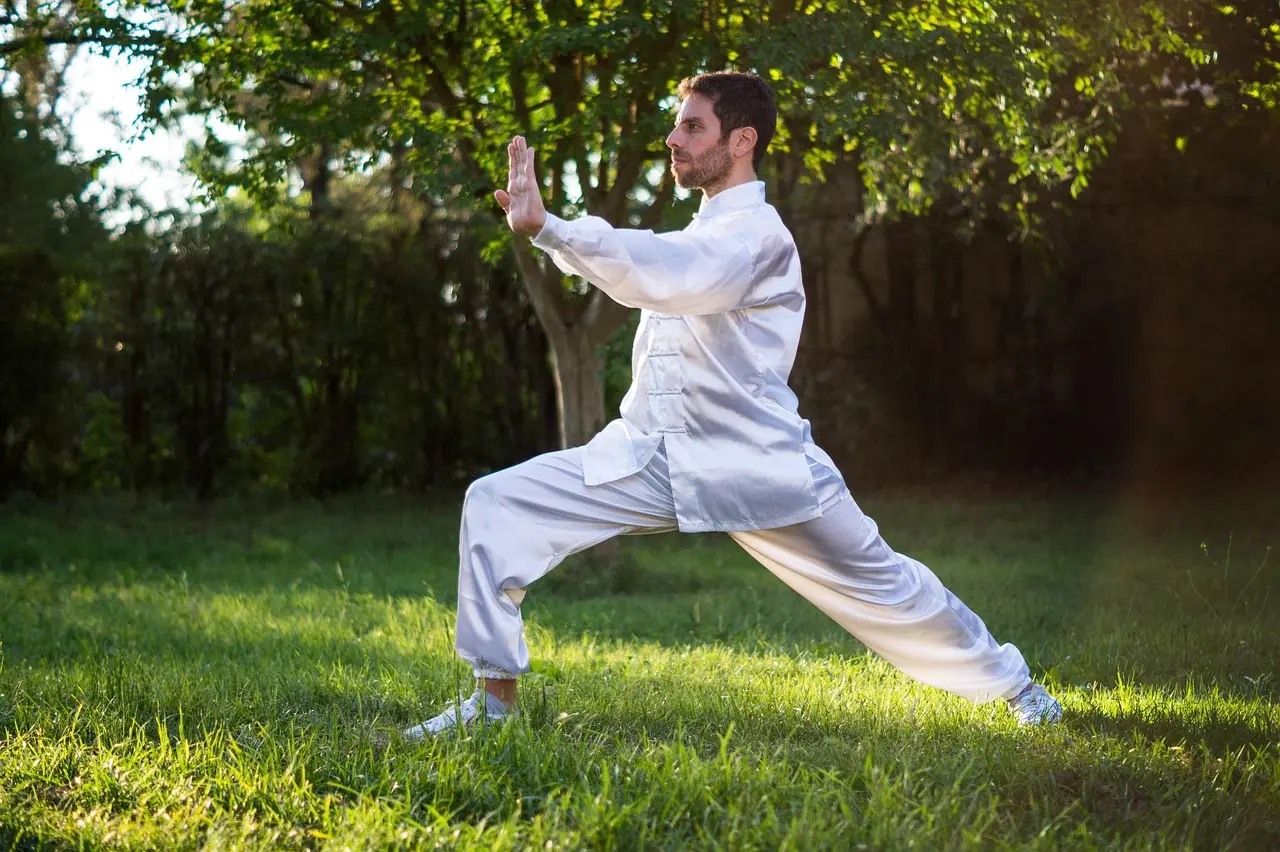
Chair tai chi for limited mobility
Seniors who really struggle to move can try chair tai chi instead – it’s safer.
These changed-up versions keep what’s good about tai chi but take away the worry about falling. You do easier versions of the usual moves while sitting, mostly moving your arms and working on breathing.
Nursing homes and rehabilitation centers increasingly adopt chair tai chi programs, noting improvements in residents range of motion and mood. These exercises really help people recovering from strokes or dealing with Parkinson’s. Teachers for chair tai chi get special training to make sure everything’s done safely. Lots of classes use chairs with arms for extra steadiness. Amazingly, doing it sitting down still helps a lot. One study found almost 9 in 10 people had less pain and better blood flow after two months of twice-weekly chair tai chi.

Tai chi for better sleep in elderly
Lots of older people have trouble sleeping, but tai chi’s calming effects can help you sleep better.
It helps your body clock by lowering stress hormones and boosting sleep hormones. Doing tai chi regularly in the evening helps set a good sleep schedule.
Retirement homes say people fall asleep quicker and wake up less at night after starting tai chi. Tai chi’s focus on connecting mind and body also helps with anxiety – which often messes up sleep. Certain moves, like Parting the Wild Horse’s Mane, work especially well before bed. Hard evening workouts might hype you up, but tai chi’s soft moves get your body and mind ready for sleep. Now lots of sleep doctors suggest tai chi instead of pills for older folks with insomnia.
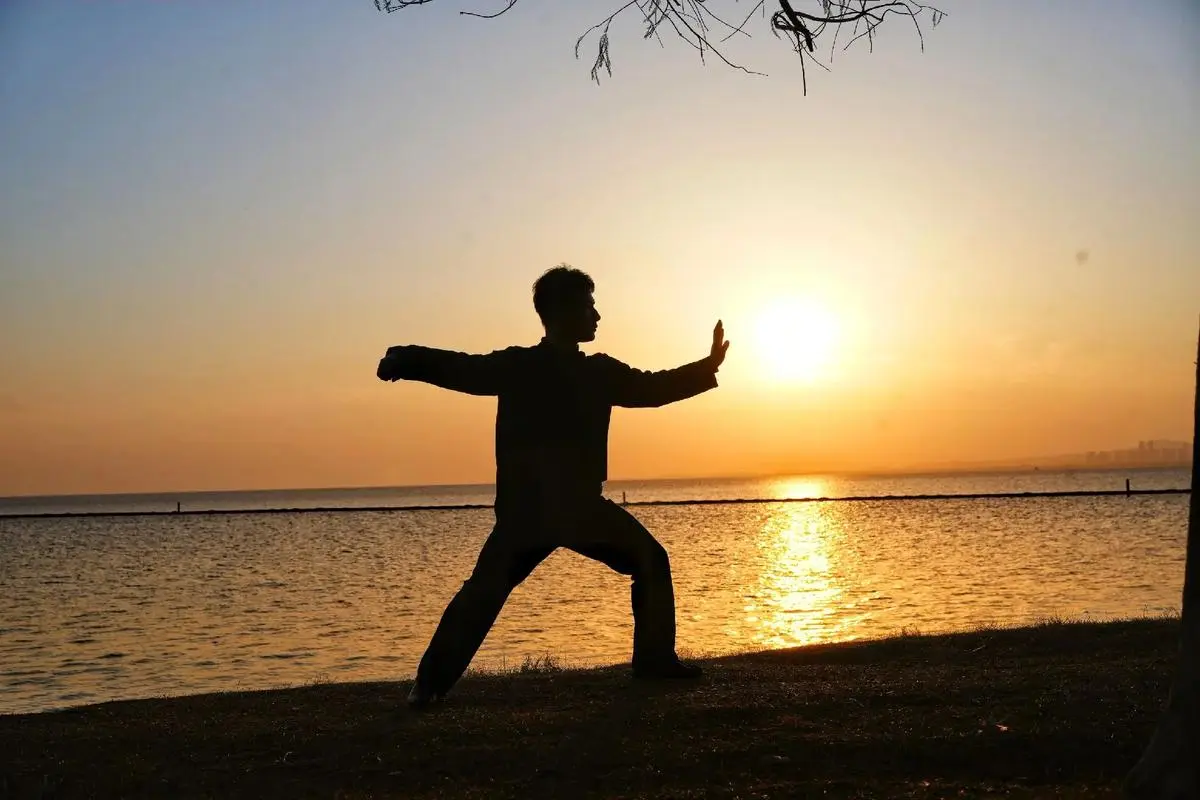
Tai chi clothing and footwear choices
Wearing the right clothes makes tai chi better, especially for older people.
Baggy, comfy clothes made of cotton let you move freely. Some like the fancy Chinese silk outfits because they mean something and breathe well, but beginners don’t need them.
Shoes really matter – flat, bendy shoes with grippy bottoms keep you steady but let your ankles move. Real tai chi shoes have thin bottoms so you feel the ground – they call this rooting. Some older folks choose tai chi shoes with special arch support. Stay away from chunky sneakers that might make you wobbly. Teachers often say to wear layers because you’ll get warmer as you go. If you’re outside, wear a hat and sunscreen to block the sun. Some special tai chi clothes pull sweat away and have strong seams for people who practice a lot.

Finding qualified tai chi instructors
How good the teacher is makes a big difference for older students.
Find teachers with certificates from good groups like the Tai Chi for Health Institute or with GRA certification. Good teachers change moves for people’s limits but keep the real tai chi style.
Lots of teachers who work with seniors get extra training in how older bodies move. The best teachers care more about safety than doing it perfectly, especially with older folks. You can often find certified teachers at community centers, YMCAs, and retirement homes. Watch a class first to see how the teacher teaches and gets along with students. Lots of teachers give one-on-one lessons for special help. Watch out for fake masters who can’t prove they’re trained – real teachers will tell you about their background. The top teachers know their stuff but are also patient and cheering. They make a welcoming space where older students can learn without rushing.
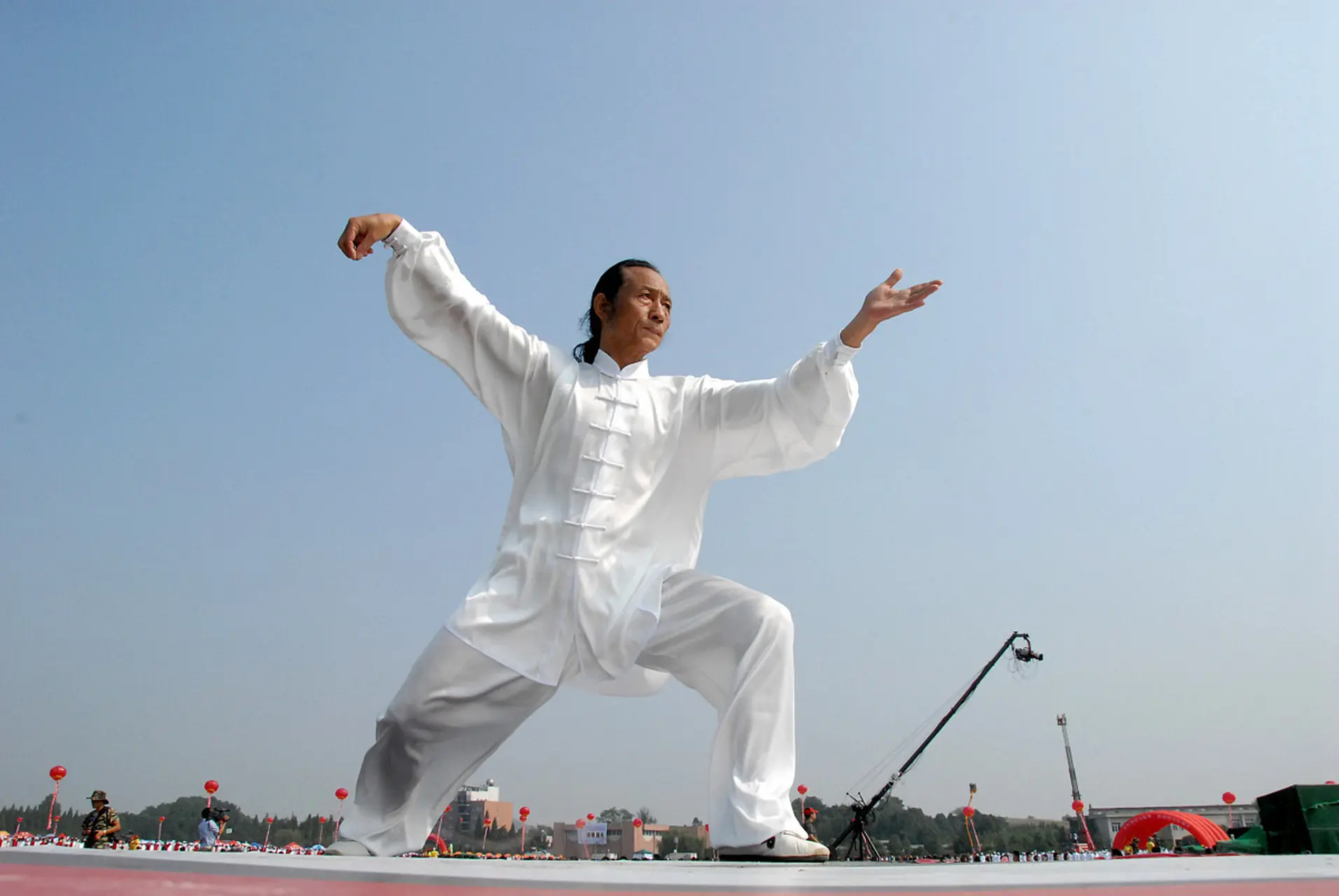
Tai chi for cognitive health in aging
New studies show tai chi helps older people think better.
Mixing movement, breathing and focus gives special brain benefits. Research proves people who do tai chi regularly remember more and their minds stay sharper longer than those who don’t.
Tai chi works multiple senses at once – matching moves with breath while knowing where you are – which wakes up brain connections. Now lots of memory care places use tai chi to help prevent dementia. Certain moves where you cross your middle (like Brush Knee and Push) help different brain areas talk to each other. The calming part also cuts stress chemicals that can fog your thinking. Participants often report clearer thinking and improved concentration in daily tasks. While not a cure for neurodegenerative diseases, tai chi offers a proactive approach to maintaining brain health through physical activity that’s gentle enough for most seniors.

Tai chi community groups for seniors
Group practice amplifies tai chi’s benefits through social connection.
Senior-specific tai chi groups foster camaraderie while providing mutual encouragement. Many communities have early morning park gatherings where seniors practice together – these outdoor sessions offer fresh air and vitamin D benefits.
Some groups organize potlucks or cultural events celebrating tai chi’s origins. The shared experience creates accountability, increasing adherence compared to solo practice. Many participants form lasting friendships through these groups. Senior centers often subsidize tai chi classes to improve accessibility. Some innovative programs pair tai chi with intergenerational activities, bringing seniors and younger practitioners together. The group setting also allows for partner exercises that enhance proprioception and trust. For isolated seniors, these communities provide vital social interaction alongside physical activity. Many report the social aspect being as valuable as the exercise itself for overall well-being.

Tai chi and medication management
While tai chi offers numerous health benefits, seniors should consult doctors about medication adjustments.
As physical condition improves, some may need reduced pain or blood pressure medications. However, changes should only occur under medical supervision.
Tai chi instructors (especially those with GRA certification) are trained to recognize signs that a student might need medical review. Many physicians now collaborate with tai chi therapists to monitor patients progress. The practice’s stress-reduction effects can enhance medication efficacy for conditions like hypertension. Some senior tai chi programs include medication education sessions, teaching students to track how their bodies respond to both medicine and movement. This holistic approach helps seniors make informed health decisions. Always inform instructors about medical conditions and medications, as some movements may need modification. With proper communication between healthcare providers and tai chi professionals, seniors can safely maximize benefits from both western medicine and traditional practices.
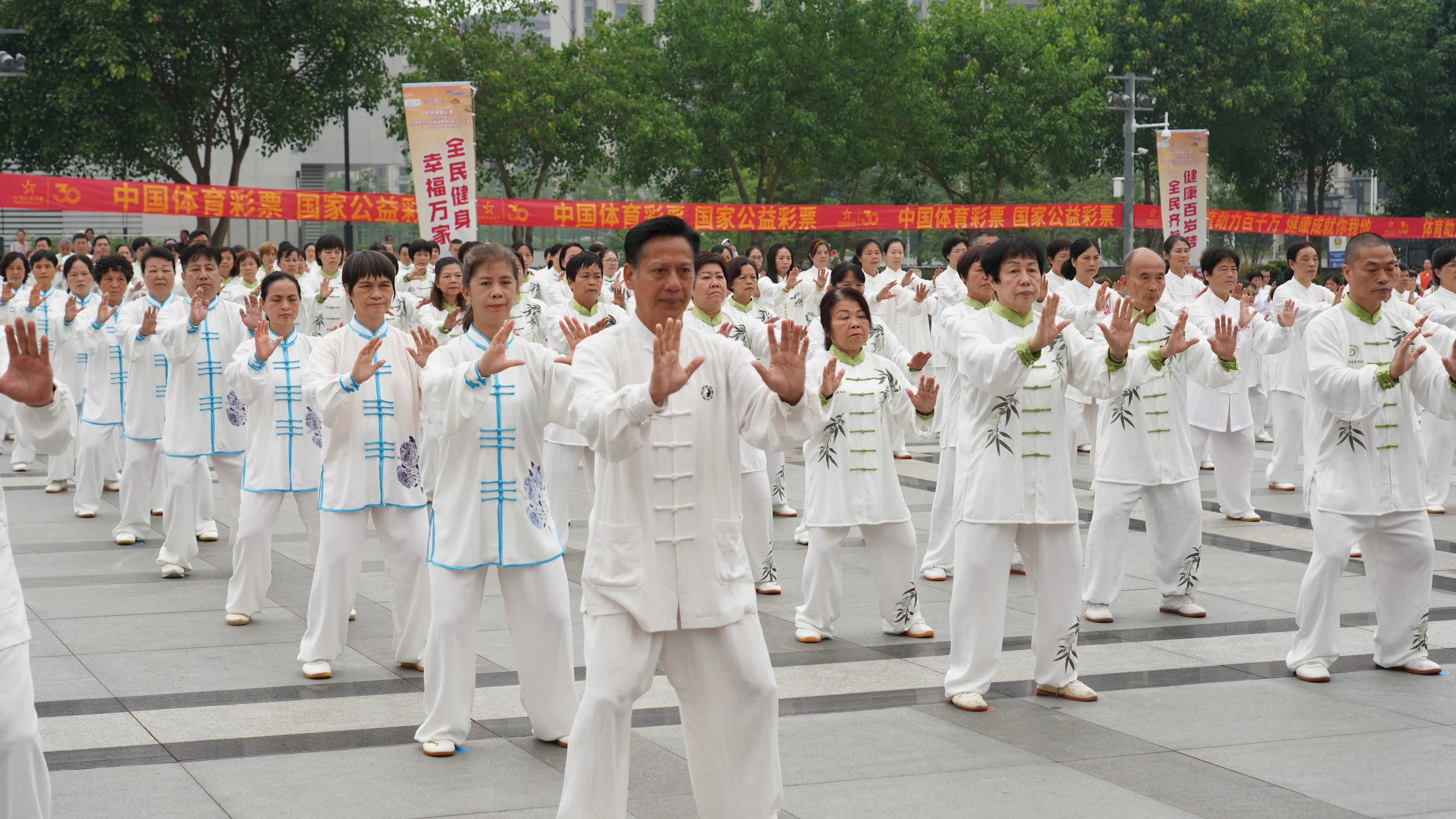
Home tai chi practice setup tips
Creating a conducive home practice space helps seniors maintain consistency between classes.
Choose a quiet area with at least a 6×6 foot clear space – remove rugs or furniture that could cause trips. Many practitioners place a small mat for standing exercises, though tai chi traditionally connects directly with the ground.
Good lighting prevents missteps, while natural light enhances the experience. Some seniors create altar spaces with meaningful objects to establish a meditative atmosphere. Technology can assist – streaming tai chi videos or using mirror walls helps self-correct form. Keep water nearby and maintain comfortable room temperature. Many find practicing at the same time daily builds routine. For those with limited space, chair tai chi offers an excellent alternative. Safety rails or sturdy chairs placed strategically provide support if needed. The key is creating an inviting space that motivates regular practice without requiring perfection – even 10-15 minutes daily yields benefits.
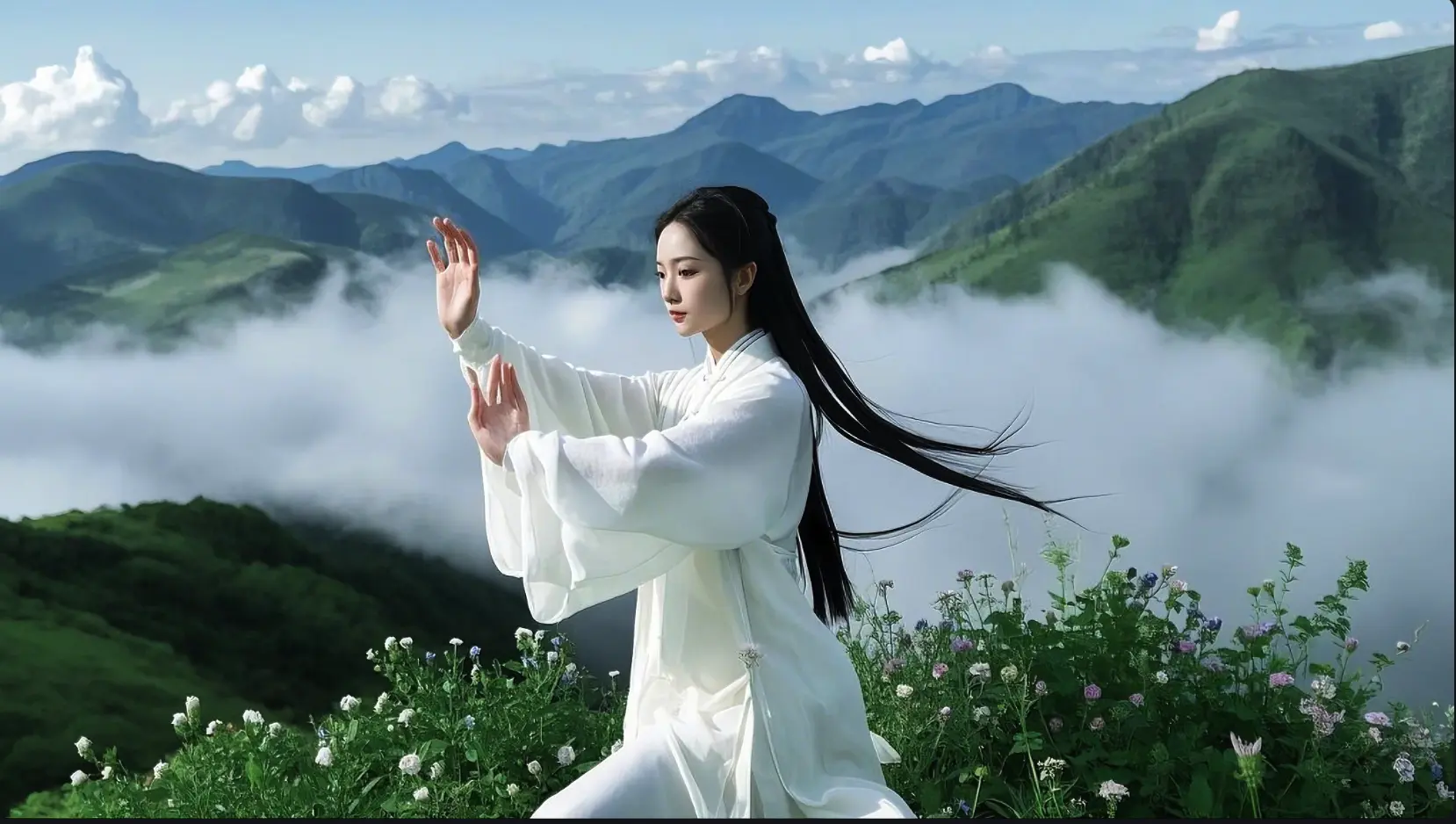
Tai chi equipment for elderly practitioners
While tai chi requires minimal gear, certain equipment enhances safety and enjoyment for seniors.
Foldable walking canes double as practice swords for those interested in weapon forms. Resistance bands add variety to strength-building exercises.
Many seniors benefit from balance boards or wobble cushions to intensify stability training. Audio guides with paced instructions help home practitioners maintain proper rhythm. Some use tai chi balls (small weighted spheres) to improve grip strength and coordination. Pulse oximeters allow monitoring of oxygen saturation during breathing exercises. For outdoor practice, portable shade canopies protect against sun overexposure. Specialized tai chi fans add artistic expression while improving wrist mobility. However, the most important equipment is proper footwear and comfortable clothing – extras should complement rather than complicate practice. Many community tai chi programs lend equipment so seniors can try before investing. As skills progress, individuals can gradually acquire items that match their evolving practice.
Tai chi offers seniors a holistic approach to aging gracefully, addressing physical, mental, and emotional well-being through gentle movement.
Whether improving balance, managing chronic conditions, or fostering social connections, this ancient practice delivers modern benefits. The key is starting slowly, seeking qualified instruction, and practicing consistently.
Many health insurance plans now cover tai chi classes recognizing their preventive health value. Why not visit a local senior center or park and observe a class? That first step onto the tai chi path could lead to profound improvements in quality of life. Remember – it’s never too late to begin, and every small movement counts toward better health.
